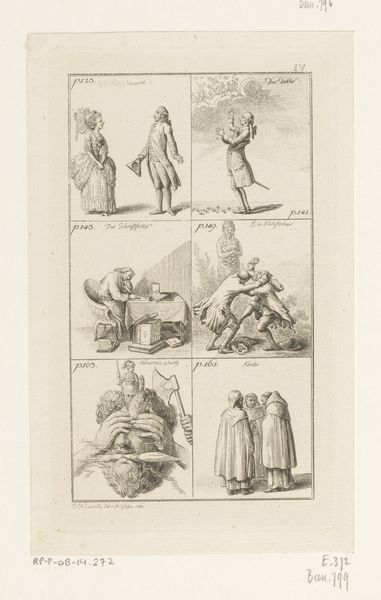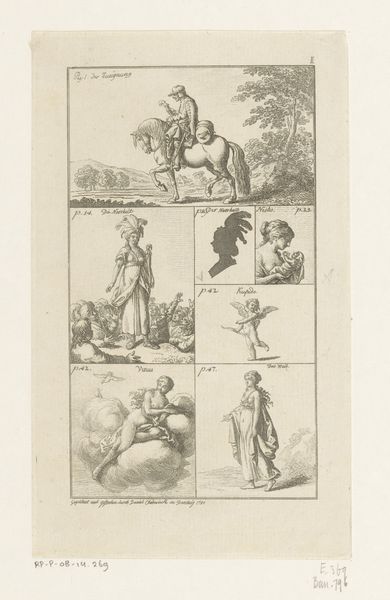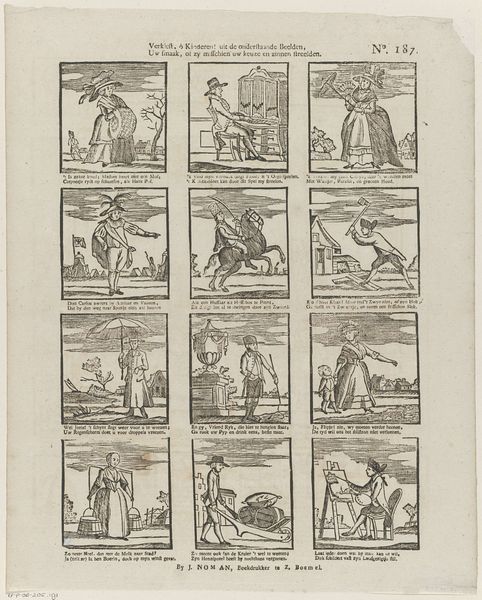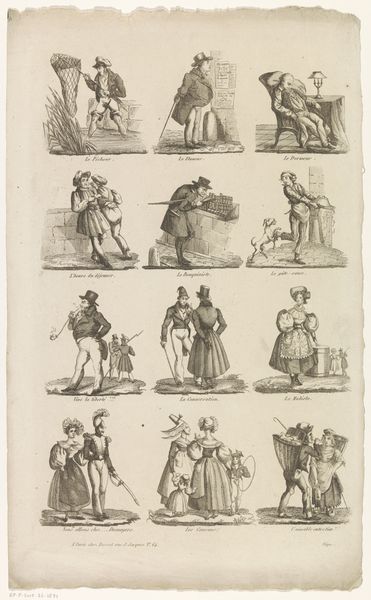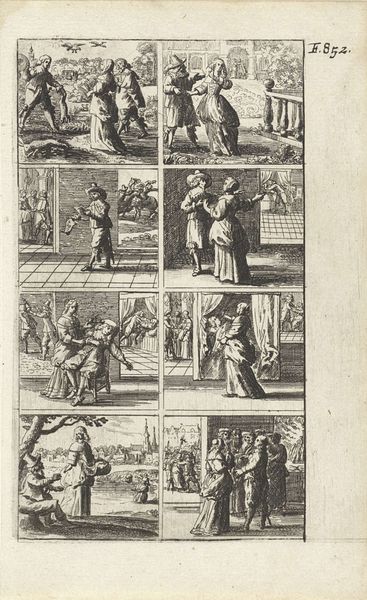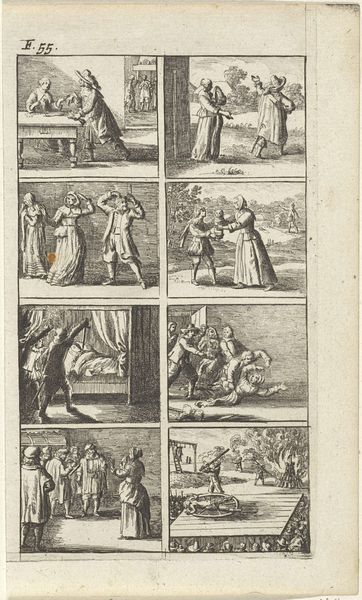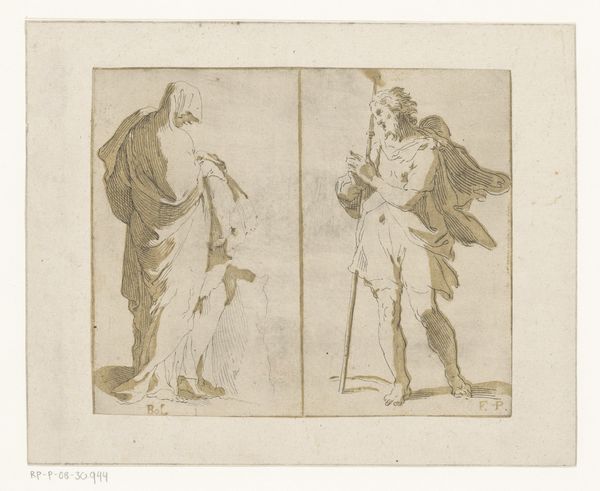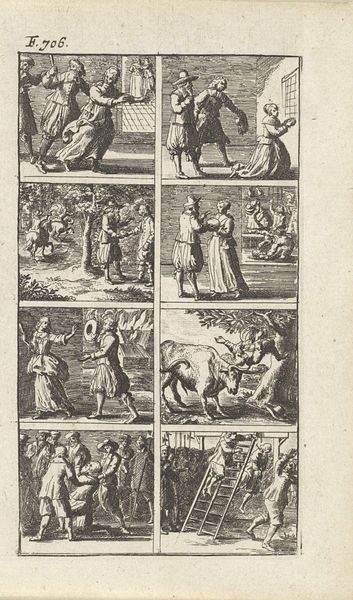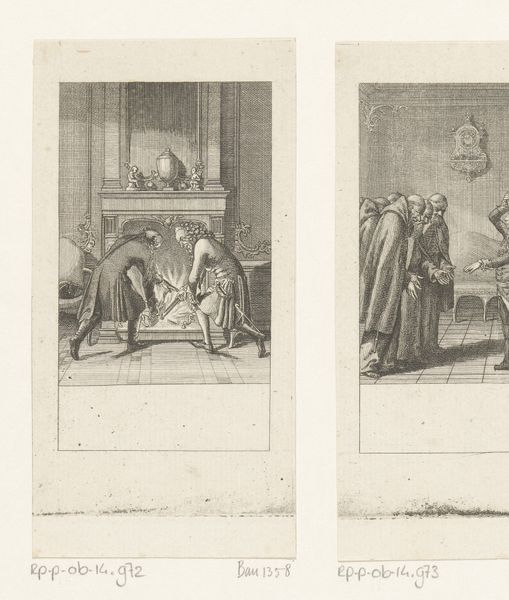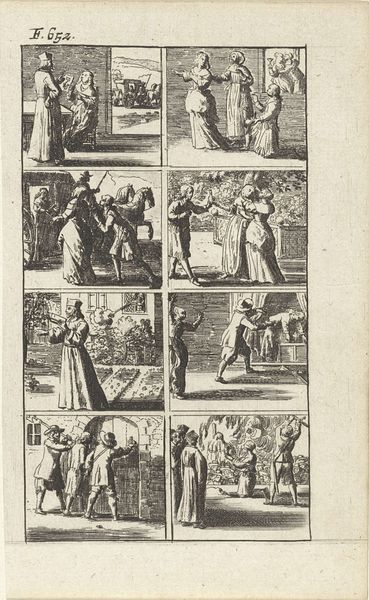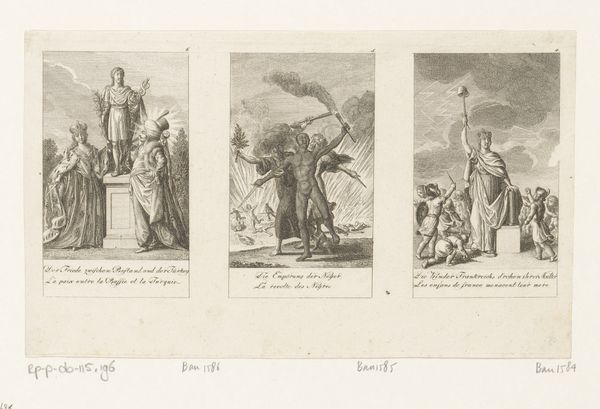
print, engraving
#
comic strip sketch
#
imaginative character sketch
#
light pencil work
# print
#
sketch book
#
personal sketchbook
#
idea generation sketch
#
sketchwork
#
sketchbook drawing
#
history-painting
#
storyboard and sketchbook work
#
sketchbook art
#
engraving
Dimensions: height 153 mm, width 91 mm
Copyright: Rijks Museum: Open Domain
Curator: Here we have “Blad uit De Lof der Zotheid,” or “Page from In Praise of Folly,” an engraving created around 1780 by Daniel Nikolaus Chodowiecki. Editor: Well, that certainly sets the stage. Immediately, the visual cacophony hits you. So many tiny narratives clamoring for attention, each box a separate stage for some enigmatic drama. It’s a page bursting with activity! Curator: It is! Chodowiecki was known for these detailed prints, often satirical in nature. This particular piece seems to be a series of vignettes illustrating different aspects of human folly, likely tied to Erasmus's original text. You can see, for instance, a winged dragon, a cleric on a donkey... Editor: Precisely! And the figures…some seem caricatured, distorted even. It feels as if the artist wants to showcase each individual’s manner of bearing, carriage, and movement. I notice each tiny, segmented scene is self-contained with very distinct compositions. Curator: That segmentation is crucial. It's like a comic strip, but without a clear linear narrative. Instead, it functions more as a typology of folly, each scene a distinct type. Take the panel with the judges, for instance. That could represent judicial corruption or blind obedience to the law. Or the panel with the donkey seemingly mid-stride as it ferries along some hooded figure on its back... Editor: Mmh, the cloaked figure almost looks like an authority of some sort on its high perch, aloof from everything else! And consider that wolf in clerical garb; I take this symbol as the most self-incriminating. Such use of clothing adds more to the subject than can easily meet the eye at first glance. Curator: Exactly! These visual allegories carry weight. Throughout history, artists have used animal symbolism and scenes of everyday life to convey societal critiques, or distill certain emotions or psychological realities of a certain population. Chodowiecki plays into a longer tradition here of art being more than just a pretty picture. Editor: Yes, absolutely! Even the tight linework contributes to the overall sense of intellectual playfulness. Now I wonder what In Praise of Folly itself originally aimed to evoke in readers of the 18th century… Curator: Well, hopefully our little journey into this engraved page offered you a new perspective of symbols, archetypes and our follies as humans! Editor: Yes! By taking the time to carefully dissect individual compositional decisions, we found there can be great meaning lurking beneath even the tiniest scenes of human endeavors.
Comments
No comments
Be the first to comment and join the conversation on the ultimate creative platform.

